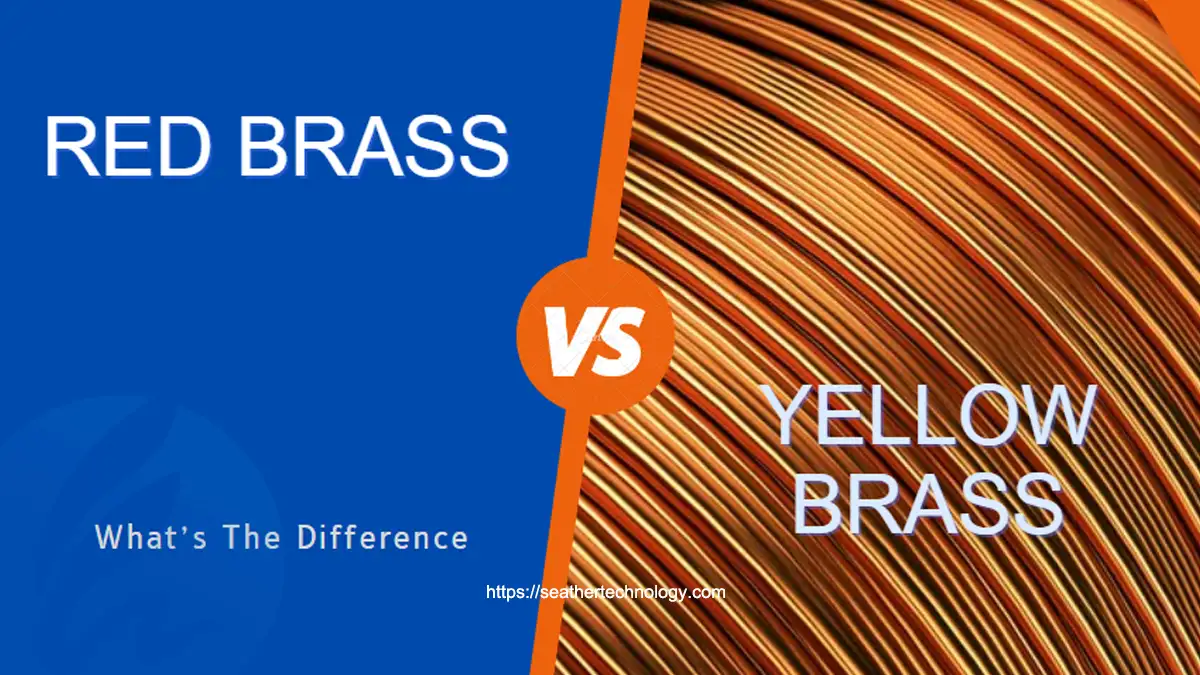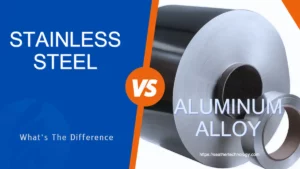Brass is a unique alloy of copper and zinc.
It is most commonly used in many applications due to its outstanding properties.
Brass is categorized into two main types: red brass and yellow brass.
Both of these types of brass have the same element but in different compositions and are used in a variety of applications.
Red brass has more copper content than yellow brass. On the other hand, yellow brass has more zinc content than red brass.
Red brass generally contains 85 to 90% copper, and yellow brass contains 60 to 80% copper with some other alloying elements.
Yellow brasses are commonly used in electrical connectors, musical instruments, and decorative applications. In contrast, red brass is used in fittings, valves, piping, and water-based applications because the alloys have different qualities.
This article will help you to choose the right brass material for your project. Learn more about the difference between red brass and yellow brass alloy.
Let’s keep reading.
Nowadays, brass has started to replace copper; therefore, its use has increased in various applications.
Brass material has several variations. One of the important variations is red brass, which includes copper, zinc, and tin in its composition. It is also known as a gunmetal.
Red brass is a valuable material in a variety of sectors, but it is not suitable for seawater applications.
Zinc interacts with seawater, leaving exposed copper. It has excellent corrosion resistance, strong thermal and electrical conductivity, and great strength. It is employed in various applications due to its high corrosion resistance.
What Is Yellow Brass?
Yellow brass is a copper-zinc alloy with zinc concentrations ranging from 20 to 38%. In this range, the brass exhibits a distinct yellow color; lower zinc percentages give the alloy a redder look, while greater zinc concentrations make it more yellow.
Yellow brass is highly corrosion-resistant and is commonly used for decorative purposes.
It is also applied to architectural grillwork, electrical fittings, locks, and hardware.
Yellow brass contains an average of 35% zinc, which is three times greater than red brass. It is also very malleable and ductile because of its high zinc content.
Chemical Composition of Red Brass vs. Yellow Brass
The chemical composition of the red and yellow brass is given in the following table.
Alloy Grade | Copper (Cu) % | Zinc(Zn) % | Tin (Sn) % | Lead (Pb) % | Iron(Fe) % | Arsenic (As) % | Manganese (Mn) % |
Red Brass | 85~90 | 5~10 | Min 2 | Max 1 | 0.1 | 0.01 | 0.5 |
Yellow Brass | 60~80 | 30~40 | Max 1 | Max 1 | 0.1 | 0.01 | 0.5 |
Red Brass vs. Yellow Brass Strength Difference
Both of these alloys have differences in strength due to the copper contents. Red brass is stronger due to the more copper contents than yellow brass. Copper is a stronger metal than zinc; therefore, it increases the strength of an alloy. Red brass is most usually used in applications that require a high level of strength, whereas yellow brass is generally used in applications that require less strength.
Red Brass vs. Yellow Brass: Difference in Physical and Mechanical Properties
Due to the different chemical compositions, red brass and yellow brass have distinct physical and chemical properties.
Physical properties of Red brass Vs Yellow brass
The following table shows the physical properties of red and yellow brass.
Property | Red brass | Yellow brass |
Color | Reddish | Yellow |
Density | 8.5-8.7 g/cm³ | 8.3-8.5 g/cm³ |
Melting point | 900-940 °C (1652-1724 °F) | 880-920 °C (1622-1690 °F) |
Thermal conductivity | 118-122 W/mK | 109-113 W/mK |
Electrical conductivity | 21-24 MS/m | 25-28 MS/m |
Chemical properties of red brass vs. yellow brass
Property | Red brass | Yellow brass |
Tensile strength (Mpa) | 580 | 315 |
Yield strength (Mpa) | 435 | 200 |
Hardness (HB) | 80~90 | 70~80 |
Elongation (%) | 30 | 40 |
Machinability | Great | Excellent |
Red Brass vs. Yellow Brass: Difference in Cost
Copper has surged in price in recent years to around $10,000 per metric ton. Since red brass has a higher copper content in its composition, it costs more than yellow brass. Where extra strength is unnecessary, you can save money by using yellow brass instead of red brass.
Red Brass vs. Yellow Brass: Scrap Price Difference
Old parts of brass that are no longer useful are cleaned and recycled before being used as raw material to make new parts. Scrap red brass is likewise more expensive than yellow brass due to the market value of copper.
Red Brass vs. Yellow Brass: Difference in Weight
The weight of any material is critical in many applications, particularly in aircraft production. Weight is also a significant physical attribute of brass. The ability of any product to withstand pressure is also determined by its weight. Red brass has a higher density than yellow brass; hence, it weighs more than yellow brass.
Red Brass vs. Yellow Brass: Difference in Corrosion-resistance
Before choosing a material for your project, it is critical to understand all of the material’s characteristics and features. Corrosion is also a very common factor that can’t be ignored. Between the red and yellow brass, the red brass is more corrosion resistant than yellow brass in harsh environments due to the high concentration of copper.
Red Brass vs. Yellow Brass: Difference in Durability
Durability is a broad term that describes the performance of a metal or a component made from that metal. A material’s durability is determined by its ability to withstand wear, fatigue, corrosion, fracture, deformation, and exposure to various service temperatures.
In the comparison of red and yellow, Red brass is a more durable material than yellow brass. It can withstand wear resistance and fracture deformation in various conditions.
Similarities between Red Brass and Yellow Brass
These two varieties of brass differ in various ways, yet they also share significant similarities while being made from the same base metal. Some common similarities between red and yellow brass are given below:
- Both red and yellow brass are utilized in the production of similar applications or products, including jewelry and musical instruments.
- They include the same alloying components (copper and zinc), but the proportions vary for each metal.
- They both conduct heat and electricity well.
- Both of these alloys are very good in machinability and formability.
Red Brass vs. Yellow Brass: Which Is Stronger?
When making decisions on the material’s strength, keep in mind the purpose for which it will be used. If your product requires extra strength, then Red brass is a better material for you because it is stronger than yellow brass.
Is Red Brass Better Than Yellow Brass?
Both are suitable for a wide range of applications and environments. Red brass has higher strength, durability, and corrosion resistance. However, due to these features, red brass is more expensive and less available. On the other hand, yellow brass is widely utilized in a variety of applications and is inexpensive.
Which material is best for you depends entirely on the specifications of your product or application.
Red Brass vs. Yellow Brass Applications
Jewelry making
Most jewelry designers choose red brass to make various types of jewelry because it is more resilient and lasts longer than yellow brass. They want to supply their customers with an excellent and durable product without worrying about the cost.
Musical instruments
Both metals are commonly used to make musical instruments like trumpets and trombones. Yellow brass produces a more stable tone in trumpets and trombones than red brass. It is slightly brighter on soft dynamics and shows little change as it becomes louder. On the other side, red brass gives a deeper or darker tone when played softly.
Electrical accessories
Because of their high electrical conductivity, both are utilized in electrical accessories such as wires, sockets, and plugs. Red brass is commonly utilized for this purpose due to its high copper content. Copper is a great conductor of electricity, and red brass contains this element in abundance; hence, it is expected to be more effective at conducting electricity than yellow brass.
Conclusion
Both of these brass alloys play a very important role in their applications.
After reading this helpful guide now, you can easily select a suitable type of brass between red and yellow according to your project.
If you have any questions, you can easily contact our team for further information.






